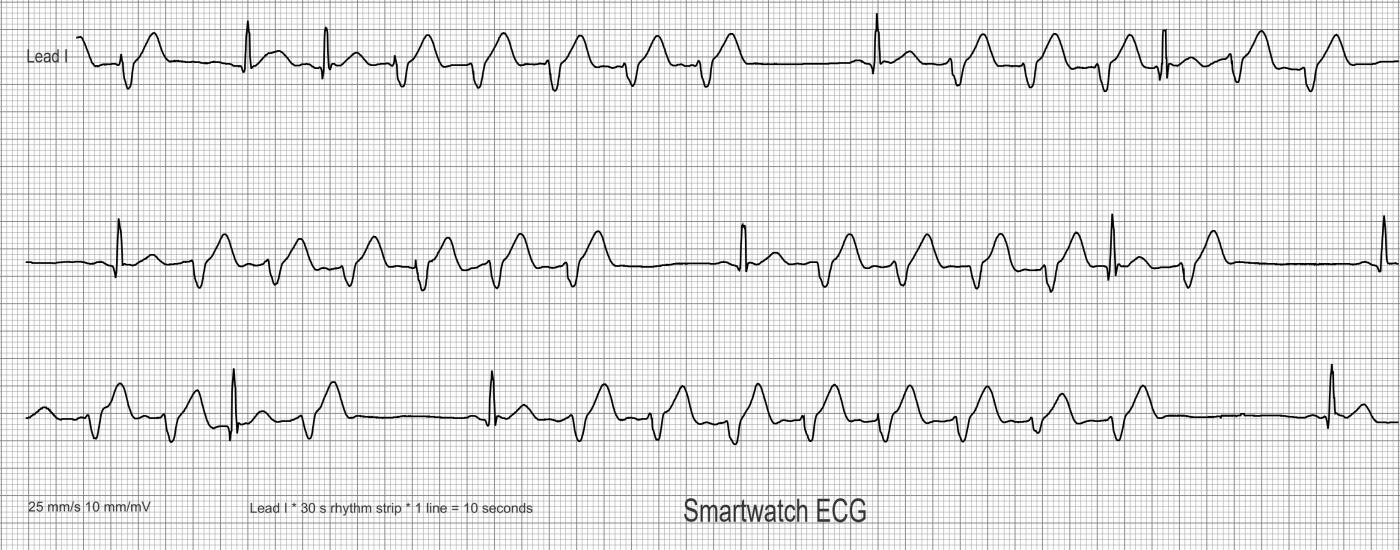Here we see a 30 s long strip of a 1-lead ECG rhythm strip, recorded with a modern Smartwatch (Apple watch). The ECG has been graphically processed for better visualization. The paper speed is 25 mm/s as usual. The lead shown corresponds to ECG lead I of the limb leads.
At first glance, the rhythm appears irregular. We see a sequence of predominantly wide, but occasionally also narrow QRS complexes. Only at one point can two narrow QRS complexes be seen in succession, each preceded by a (flat) P wave, in this case a sinus rhythm is present (heart rate just over 100 bpm). Further individual sinus node beats can be seen.
The wide QRS complexes make up the majority of the ECG. Sometimes you think you can see a P wave in front of it, sometimes not. The heart rate here is around 100 bpm. The most obvious explanation is that we are dealing here with an accelerated idioventricular rhythm (AIVR). This occurs recurrently for a maximum of 8 beats. Sometimes it is "interrupted" by interspersed sinus node beats (capture beats). Sometimes a single sinus noddal beat occurs at the end of a phase of AIVR.
AIVR is often observed in the context of reperfusion after myocardial infarction or PCI of coronary arteries. However, ER can also occur in apparently completely healthy (even younger) people.
Treatment is not usually necessary (self limiting arrhythmia).
-

- Dr A Röschl's blog
- Log in or register to post comments
All our content is FREE & COPYRIGHT FREE for non-commercial use
Please be courteous and leave any watermark or author attribution on content you reproduce.


